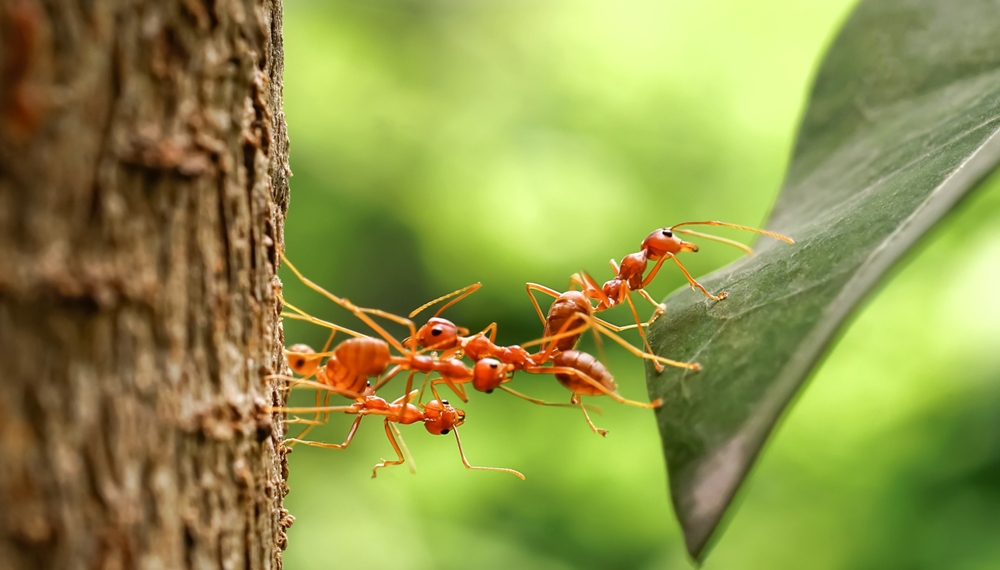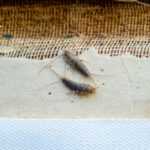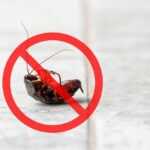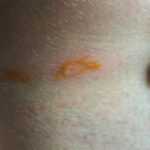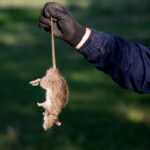Ants: Comprehensive Guide to Identification and Control
Ants can be a hassle in your home or garden. With thousands of ant species out there, each behaves differently. Whether it’s tiny ants in your kitchen or larger carpenter ants causing damage, knowing how to identify and manage them is crucial. This guide will help you understand and control ants effectively.
- There are over 12,400 ant species globally, with numerous species posing unique challenges in identification and control that impact household environments.
- Ant infestation can lead to food contamination, structural damage, and health risks, necessitating proactive management strategies for effective control.
- Effective ant control hinges on proper identification, prevention strategies, and a combination of chemical and non-chemical methods tailored to the specific species involved.
Ant Species Overview
Ant species are incredibly diverse, with over 12,400 known species worldwide and more than 700 species found in the U.S. alone. This diversity includes everything from the tiny, harmless ants we see on our countertops to the more pernicious carpenter ants that can wreak havoc on wooden structures. Understanding how ants vary in different stages of development—egg, larval, pupal, and adult—can also be crucial for effective identification and control, as well as in comparison to other ant species.
Here, we examine some of the most common types of ants you might encounter at home or in the garden. These include common household ants like the odorous house ant and pavement ant, the destructive carpenter ants, and the aggressive red imported fire ants. Each of these ant species has unique characteristics and behaviors that make them distinct, and understanding these differences is key to effective ant control.
Common Household Ants
Common household ants are the usual suspects when you find a trail of tiny invaders marching through your home. Some of the most prevalent ant species include the odorous house ant, pavement ant, and other ants like the pharaoh ant.
Odorous house ants are small, about 1/8 inch long, and emit a strong, rotten coconut-like odor when crushed. These ants typically nest indoors in wall voids or around water pipes and heaters and can have colonies with up to 100,000 ants. They often consume dead insects and sugary sweets, especially melon, and are typically found in kitchens and bathrooms.
Pavement ants, on the other hand, are slightly larger, about 3/16 inch long, and often build nests in soil next to pavement slabs and driveways. These omnivorous ants consume a wide variety of foods, including insects, seeds, honeydew, and various human foods. They can have several queens in a colony, making them particularly resilient to eradication efforts. Uncontrolled, these ants contaminate food with their body waste and disrupt domestic environments.
Carpenter Ants
Carpenter ants are a significant concern due to their ability to damage wooden structures. These ants prefer to build their nests in damp or moldy wood, such as tree stumps and firewood. Unlike termites, carpenter ants excavate wood to create nests, leaving behind large holes and piles of sawdust, a clear sign of their presence. Carpenter ant workers range in size from 1/4 to 1/2 inch and come in colors ranging from black to bicolored red and black.
The diet of carpenter ants includes sweets, living and dead insects, meat, fats, and sugary foods. Newly mated queens establish colonies and can rapidly produce 2,000 or more workers. Within these colonies, the queen reproduces, workers care for the colony, and males mate, creating a highly efficient social structure.
Red Imported Fire Ants
Red imported fire ants are notorious for their aggressive behavior and painful stings. These ants are reddish with a dark brown abdomen, making them relatively easy to identify. A sting from a red imported fire ant is very painful. It can also lead to a raised welt and a white blister. Individuals allergic to insect stings may react more severely to fire ant stings, potentially leading to anaphylaxis, a life-threatening condition.
These adaptable argentine ants can form rafts to survive increased water levels. Their diet includes sweets and proteins, contributing to their resilience.
Red imported fire ants can damage plant roots, leading to the loss of crops and other vegetation. After gaining a foothold in Southern California in 1998, they have since spread, becoming a significant pest in many areas.
Identifying Ants
Identifying the specific ant species in your home or garden is crucial for tailoring effective control measures. With around 25 species commonly infesting homes, distinguishing between them can be challenging but necessary. Behavioral and physical characteristics are essential for effective identification, helping determine the best control strategy. All ants belong to the order Hymenoptera, which groups them with other social insects such as bees and wasps.
Here, we will examine the physical characteristics that aid in ant identification, the caste system within ant colonies, and ways to differentiate ants from termites. Grasping these aspects can significantly improve your ability to manage ant infestations effectively.
Physical Characteristics
Ants have segmented bodies with distinct regions that aid in identification. A notable feature is their narrow waist, with one or two nodes between the thorax and abdomen. Additionally, all ants have elbowed antennae and six legs, features that are consistent across different ant species.
These physical traits are essential for distinguishing ants from other insects and accurately identifying the species you are dealing with.
Ant Castes
Ant colonies are organized into a caste system, including queens, workers, and drones, each with distinct roles. The queens reproduce, the worker ants perform various tasks such as foraging and caring for the queen’s offspring, and the males mate.
This social hierarchy, with specialized roles such as workers, soldiers, and queens, is vital for the colony’s efficiency and survival.
How to Differentiate Ants from Termites
Differentiating ants from termites can be critical, especially when dealing with potential structural damage. A key physical difference is that ants have elbowed antennae, while termites have straight antennae. Additionally, ants have a narrow waist with one or two nodes between the thorax and abdomen, whereas termites have a more uniform body shape.
Recognizing these differences can help in accurately identifying and managing infestations.
Ant Behavior and Communication
Ants are fascinating creatures, exhibiting highly organized social structures and intricate communication methods. They utilize chemical signals, primarily pheromones, to relay information within their colonies. These pheromones enable ants to communicate about food sources, danger, and colony needs, ensuring the colony operates efficiently. The division of labor among worker ants, males, and queens is essential for the colony’s survival and efficiency.
In this section, we will explore how ants use pheromone trails to mark routes, the social structure within ant colonies, and their foraging behavior. Understanding these behaviors can provide insights into how to manage and control ant populations effectively.
Ant Trails
Ants utilize pheromone trails to mark routes, informing other colony members about food sources. When scout ants find food, they leave a pheromone trail to guide others. This behavior is crucial for efficient foraging, as it allows ants to quickly and effectively gather food and transport it back to the nest.
Experienced ants adjust their pheromone trails based on home range markings, ensuring optimal resource collection.
Social Structure
Ant colonies exhibit a complex social structure characterized by a clear hierarchy and division of labor. An ant colony’s main castes typically include queens, workers, and males, each fulfilling distinct roles vital for survival.
Worker ants are responsible for various tasks, including foraging for food, caring for the queen’s offspring, and defending the nest. This social structure is essential not only for the efficiency of labor but also for the overall health and sustainability of the colony.
Foraging Behavior
Foraging behavior is essential for ants to find and collect food resources. Straggling ants serve as scouts. They search randomly for food or nesting sites. Once food is found, ants recruit other workers to help transport it back to the nest.
This cooperative behavior ensures that the colony has a steady supply of food, which is crucial for its survival.
Ant Nests and Habitats
Ants build their nests in a variety of environments, depending on their species and specific needs. Red imported fire ants, for example, are known for forming large colonies and can outcompete native ant species in their habitat. Carpenter ants, on the other hand, can nest in decaying wood, potentially leading to structural integrity issues. Ant species build their nests in various environments, from soil to wood to man-made structures.
Here, we explore the different nesting habits of ants, focusing on indoor and outdoor nesting, and signs indicating nest presence. Knowing where ants nest can help effectively target and manage infestations.
Indoor Nesting
Ants may nest inside homes to access food, moisture, and warmth, particularly during colder months. Moisture in wood, from leaks or decaying structures, can create ideal nesting conditions for carpenter ants. Ants typically nest indoors in walls, under baseboards, or in rotting wood. Potted plants can also serve as indoor nesting sites for some ant species.
Removing food sources and potential nesting sites significantly reduces the likelihood of infestations. Regular cleaning and proper food storage are crucial in preventing ants from entering homes. Keeping a dry environment deters ants, as they are often attracted to moisture.
Ant trails can help locate an ant nest; following them and using attractants can assist in identifying their presence.
Outdoor Nesting
Ants commonly build their nests outdoors in various locations. Common outdoor nesting locations for ants include soil, beneath rocks, and in rotting wood. Velvety tree ants nest in dead wood such as old tree limbs, stumps, and logs.
Southern fire ants usually create small mounds for their nests. These mounds often have flattened, irregular craters and are found in wood or under rocks. Red imported fire ants build their nests in large, dome-shaped mounds outdoors, often in landscaped areas like grass.
Nesting Signs
Recognizing signs of ant nests is essential for effective identification and control of pest problems. Carpenter ants leave behind sawdust, which indicates the presence of their nests as they excavate wood for nesting. Fire ant nests are recognized by dome-shaped mounds, which can grow up to one foot tall.
These signs help locate and address infestations more effectively.
Problems Caused by Ants
Ants, while fascinating, can cause a myriad of problems when they invade our spaces. Here are some significant issues associated with ant infestations:
- Food Contamination: Ants can infiltrate pantry items and other food supplies, posing serious health risks and impacting food safety.
- Structural Damage: Carpenter ants, in particular, are notorious for causing structural damage to wooden buildings by creating tunnels and weakening the wood.
- Early Detection: Early detection and intervention are crucial to preventing potentially costly repairs.
Beyond contamination and structural damage, ants can also pose health risks. For instance, fire ant stings can cause allergic reactions in some individuals, and in severe cases, these reactions can lead to anaphylaxis, a life-threatening condition that requires immediate medical attention.
Recognizing these risks underscores the importance of effective ant management strategies. In the following subsections, we delve deeper into the specific problems caused by ants, including food contamination, structural damage, and health risks.
Food Contamination
Ants often enter homes in search of food, which can lead to contamination of pantry items and other food supplies. Sticky garbage and improperly cleaned food containers attract ants and increase the risk of contamination. Preventing food contamination is crucial, as it can pose health risks.
Maintaining cleanliness, including proper washing and storage of food in closed containers, is crucial for managing ants indoors. This proactive approach helps in reducing the likelihood of ants infesting your food supplies.
Structural Damage
Carpenter ants create tunnels through wood, weakening it and potentially causing significant structural damage. The damage caused by these ants can lead to expensive repairs, making early detection crucial. Preventing such damage involves sealing cracks and holes in entry points to ensure ants cannot infiltrate and nest within wooden structures.
Regular inspections of vulnerable areas, such as basements and attics, aid in early detection and remediation.
Health Risks
Fire ant stings are particularly concerning due to their potential to cause severe allergic reactions. Individuals allergic to insect stings may experience anaphylaxis, a condition that requires immediate medical attention. Even for those not allergic, fire ant stings are extremely painful and can result in raised welts and blisters.
Recognizing these health risks highlights the importance of effective ant control measures to protect your family and pets.
Effective Ant Control Methods
Effective ant control starts with proper identification of the ant species, as different species require different approaches. Understanding ant behavior and nesting habits significantly improves pest control effectiveness. Killing visible ants might offer temporary relief, but it won’t solve the problem if the colony remains intact.
Here, we will explore various methods to control ants, including prevention tips, chemical control, and non-chemical methods.
Prevention often serves as the best defense against ant infestations. Simple measures such as maintaining cleanliness, sealing entry points, and proper food storage can go a long way in keeping ants at bay. For persistent infestations, chemical control methods like ant baits and insecticide sprays can be effective. Non-chemical methods, such as monitoring and physical barriers, are also valuable tools in an integrated pest management (IPM) approach.
Let’s delve deeper into these methods to understand how to effectively manage ant populations.
Prevention Tips
Prevention serves as the cornerstone of effective ant control. Maintaining cleanliness, including proper washing and storage of food in closed containers, is crucial for managing ants indoors. Sealing cracks and holes in entry points is another crucial step to prevent ants from entering buildings.
Regular inspections of potential nesting sites, such as kitchens, bathrooms, and under sinks, aid in early detection and addressing ant presence. Implementing these preventive measures significantly reduces the likelihood of ant infestations.
Chemical Control
Chemical control methods, such as ant baits and insecticide sprays, are commonly used to manage infestations. Ant baits exploit the foraging behavior of ants, allowing the toxicant to be distributed throughout the colony, including the queen. Baits for residential users come in solid or liquid forms, often prepackaged in stakes or bait stations.
Common insecticides for outdoor treatments include bifenthrin, cypermethrin, and lambda-cyhalothrin. While perimeter treatments can kill foraging ants, they do not eliminate the colony or queens, making them a temporary fix. Placing bait stations in shady areas where ants trail can enhance effectiveness.
Non-Chemical Methods
Non-chemical methods are integral to an Integrated Pest Management (IPM) program. Monitoring for ants and sealing entry points help prevent insects, including ants, from entering a home. Physical barriers such as sticky traps aid in monitoring and controlling ant populations without chemicals.
These methods are especially useful for minimizing chemical exposure while effectively managing ant infestations.
Ant infestations are a common problem that can cause significant issues, from food contamination to structural damage and health risks. Understanding the different ant species, their behavior, and nesting habits is crucial for effective control. By implementing preventive measures, using chemical and non-chemical control methods, and seeking professional help when needed, you can manage and mitigate ant problems effectively. Remember, Gopher Patrol is here to help with all your offering expert services to keep your home ant-free, pest control needs. Call Gopher Patrol today to take advantage of their 10% discount for new customers and ensure your home stays pest-free.
Frequently Asked Questions
Why do ants just suddenly appear?
Ants suddenly appear primarily in search of food sources, such as sugars and uncovered crumbs. Ensuring proper food storage and cleanliness can help prevent their intrusion.
Why should we not squish ants?
Crushing an ant releases bodily fluids that emit pheromones, signaling the entire colony to converge on the location. It is advisable to avoid squishing ants to prevent attracting other ants.
How can I identify the ant species in my home?
To identify the ant species in your home, examine their physical characteristics, including body segmentation, waist nodes, and antennae, as well as their foraging habits and nesting preferences. These traits will aid you in accurate identification.
What are the most common household ants?
The most common household ants are the odorous house ant, pavement ant, and pharaoh ant, commonly found in kitchens and bathrooms in search of food and moisture. Identifying these species can help effectively manage an ant infestation.
How do I prevent ants from entering my home?
To effectively prevent ants from entering your home, maintain cleanliness, seal cracks and entry points, and store food in airtight containers. Regular inspections of potential nesting sites will also help you detect and address any issues early on.
